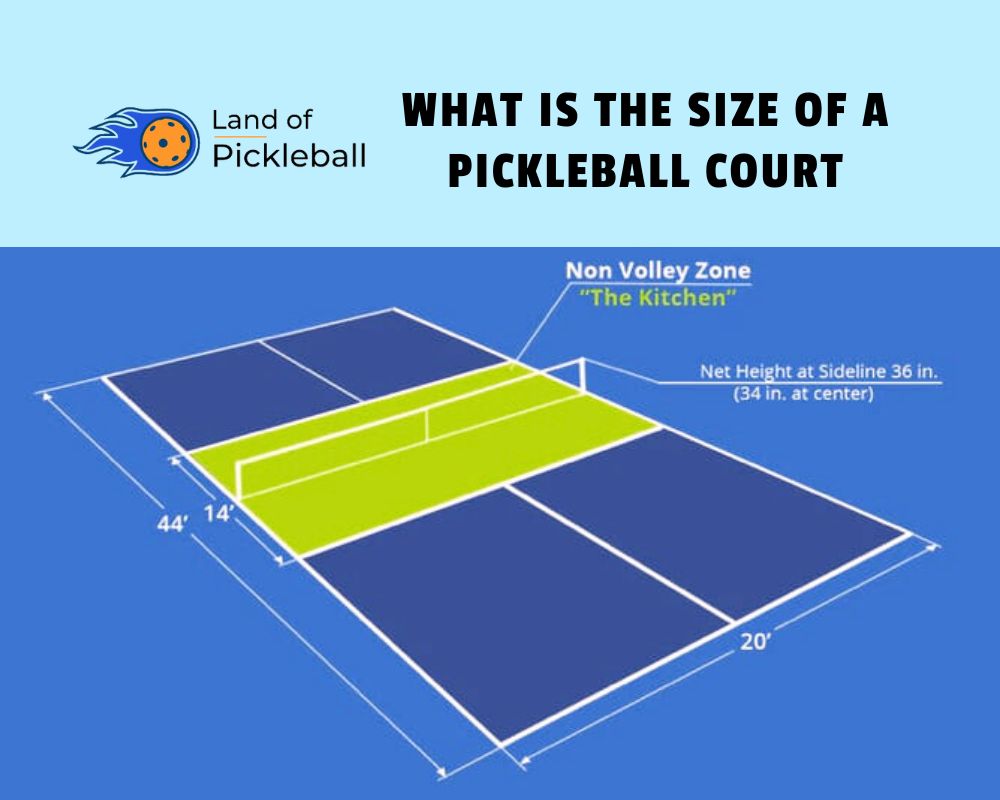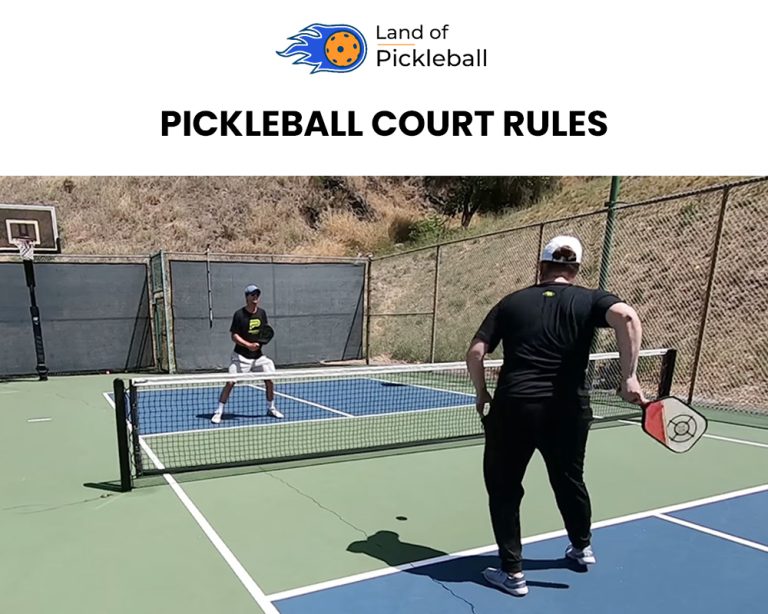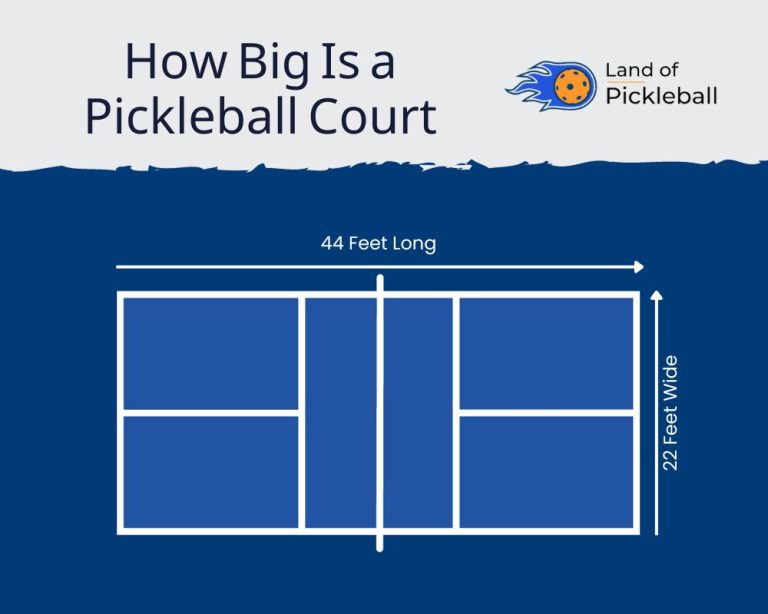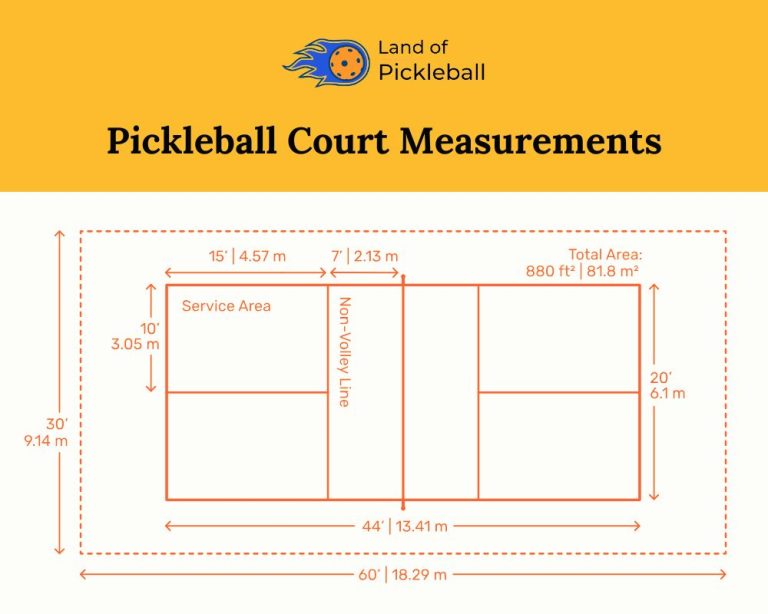What is the Size of a Pickleball Court?
Pickleball court: 44′ long, 20′ wide (6.10m x 13.41m). Let’s know the details for precise sizing, setting up, and playing this rapidly growing sport. 🏓
Visit: Dimensions of a Pickleball Court
Introduction of What is the Size of a Pickleball Court
Pickleball, which originated in the mid-1960s in Washington State, has stood out as a family-friendly game. With its increased popularity in recent years, understanding the dimensions, layout, and surfaces of a pickleball court has never been more crucial for enthusiasts.
We inquire about the intricate details of what is the size of a pickleball court, surface types, and differences from other courts. Additionally, you can learn how to create your own court at home.
Know the Pickleball Ground Dimensions
Pickleball courts, measured in feet, present dimensions of 20ft by 44ft, equivalent to 6.10m x 13.41m. There are several distinctive zones within the court, unique to pickleball, including the NVZ, which measures 20ft (6.10m) wide and has a length of 7ft (2.13m). The right and left service areas are 10ft (3.05m) wide and 15ft (4.57m) long.
Regulation Net Height:
The pickleball net is set at a slightly lower height than a tennis net, measuring 36 inches (91.44cm) at the sidelines and 34 inches (86.36cm) at the center.
Pickleball Court Layout
Understanding the layout is paramount for enthusiasts and new players alike. The court is divided into an NVZ and right and left service areas, positioned on either side of the net. The players are prohibited from volleying (striking the ball without it bouncing first) in the NVZ. Once a rally starts, players are free to volley in the service area, with players serving behind the baseline diagonally into the opposite service area.
Visit: Layout of Pickleball Court
What is the Size of a Pickleball court and its Surfaces
After knowing the size measurement, it’s essential to know what the best material for your court surface is. Pickleball courts can be played on various surfaces such as Astroturf, concrete, wood, asphalt, clay, and grass. It offers versatility for indoor and outdoor play.
Indoor courts typically use specialized polyurethane sports surfaces. Meanwhile, home and backyard courts usually opt for concrete bases, often overlaid with modular court tiles, to reduce impact on the lower body.
Indoor & Outdoor Pickleball Courts:
Whether indoor or outdoor, pickleball courts maintain consistent dimensions. However, the playing surface may vary, with outdoor courts requiring materials that withstand different weather conditions.
Recommended Playing Surface Area:
USAPA recommends a playing surface area measuring at least 30 feet (9.14 meters) wide and 60 feet (18.29 meters) long. However, a larger space is preferable, typically 40 feet (12.19 meters) by 64 feet (19.51 meters), to allow ample space around the court, preventing the cramming of courts together.
Comparisons to Other Sports Courts
Learn More: Pickleball is a combination of What Sports?
DIY Home Pickleball Court
To create your own pickleball court, you need a space of at least 30ft (9.14m) by 60ft (18.29m). While grass can serve as a temporary solution, concrete bases are ideal for precise bounces and longevity. Essential equipment includes line marking tools, a pickleball net, and measuring equipment.
View: DIY Pickleball Area
Further Details on What Size is a Pickleball Court
Distinctions Between Singles and Doubles Play:
While the dimensions remain consistent, the style of play varies between singles and doubles. It usually affects the positioning and strategy employed by players during the match.
Construction & Lines:
When constructing a pickleball court, careful attention should be given to the court lines, ensuring accurate measurements to avoid any discrepancies during official matches. Additionally, the lines should be visible, with a contrasting color to the court surface, allowing players to make precise plays.
Space Between Courts:
Optimally spacing courts is crucial to facilitate seamless play and avoid any interference, especially in facilities with multiple courts, such as community centers and sports complexes.
USA Pickleball Association Guidelines:
Adhering to the USAPA guidelines ensures the regulation pickleball court dimensions and configurations are maintained, promoting fair play and standardization across courts.
FAQs
Conclusion
Pickleball is a versatile and exciting sport that has garnered immense popularity over the years. Your better understanding of the dimensions, layout, and surface of a pickleball court can significantly enhance your playing experience. From the distinctive NVZ to the varied surfaces, each element of a pickleball court contributes to the uniqueness and appeal of the sport.







